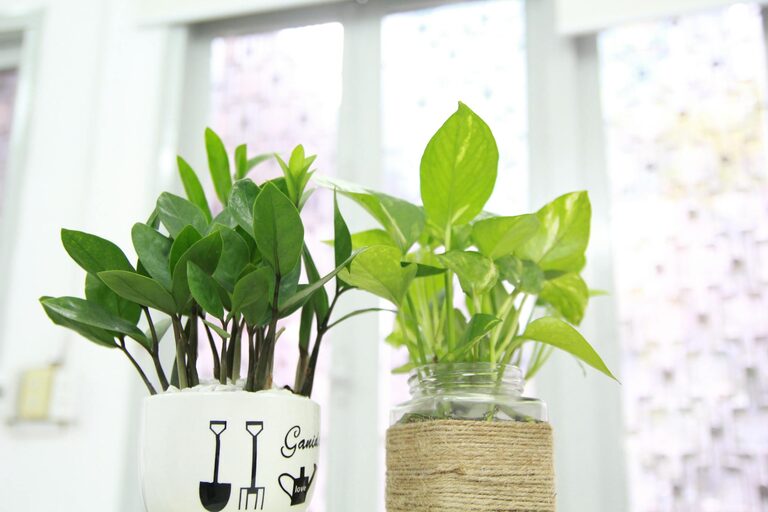
Essential Tips for Keeping Your Houseplants Healthy and Thriving
Bringing houseplants into your home offers numerous benefits, from improving air quality to adding a touch of nature to your living space. However, keeping these plants healthy can sometimes feel challenging, especially if you’re new to indoor gardening. With the right care and attention, your houseplants can flourish and brighten your home year-round. Here are some practical tips to help you keep your houseplants healthy and thriving.
Understanding Your Plant’s Needs
Every plant species has unique requirements regarding light, water, and soil. Learning about your specific houseplants is the first step toward proper care.
Light Requirements
Plants need light for photosynthesis, but the intensity and duration vary widely:
– Bright, Direct Light: Succulents, cacti, and many tropical plants prefer strong sunlight. Place them near south-facing windows.
– Indirect Light: Many common houseplants like pothos and peace lilies thrive in bright, indirect sunlight.
– Low Light: Some plants can tolerate lower light conditions, such as snake plants and ZZ plants, making them ideal for less sunny rooms.
To identify the best spot, observe where natural light falls in your home throughout the day. Rotate your plants occasionally to ensure even growth.
Watering Wisely
Overwatering and underwatering are the most common mistakes in houseplant care.
– Check the Soil: Before watering, stick your finger about an inch into the soil. If it feels dry, it’s time to water. If it’s still moist, wait a few days.
– Water Deeply: When watering, do so until excess water drains from the pot’s bottom. This ensures roots receive adequate moisture.
– Avoid Waterlogging: Use pots with drainage holes to prevent standing water, which can cause root rot.
– Adjust with Seasons: Plants generally require less water during the winter months when growth slows.
Proper Humidity and Temperature
Indoor environments can be dry, especially in winter. Many houseplants prefer humidity levels between 40-60%.
– Increase Humidity: Use a humidifier, group plants together, or place water trays near your plants to maintain moisture in the air.
– Ideal Temperatures: Most houseplants thrive between 65-75°F (18-24°C). Avoid drafts, sudden temperature changes, or placing plants near heating or cooling vents.
Choosing the Right Soil and Pot
Healthy roots are essential for overall plant health.
– Use Quality Potting Mix: Avoid garden soil; instead, use a light, well-draining potting mix formulated for indoor plants.
– Repot When Needed: As plants grow, roots may outgrow their containers. Repot every 1-2 years or when you see roots emerging from drainage holes.
– Size Matters: Choose a pot slightly larger than the root ball to give roots room to grow without excess soil that retains too much moisture.
Feeding Your Plants: Fertilizing Basics
Plants need nutrients beyond what’s available in soil alone.
– Use Balanced Fertilizer: During the growing season (spring and summer), feed your plants every 4-6 weeks with a balanced, water-soluble fertilizer.
– Cut Back in Dormancy: In fall and winter, many plants rest and require less feeding.
– Follow Instructions: Over-fertilizing can harm plants, so always follow the recommended dosage.
Routine Maintenance for Health and Aesthetic
Regular care helps plants thrive and maintain their appearance.
Pruning and Trimming
– Remove dead or yellowing leaves to encourage new growth.
– Trim leggy or overgrown parts to shape your plant and keep it compact.
– Use clean, sharp scissors or pruners to prevent damage.
Pest Control
Indoor plants can occasionally attract pests like spider mites, aphids, or scale.
– Inspect plants regularly for signs such as discolored leaves, sticky residue, or visible insects.
– Wipe leaves with a damp cloth or use mild insecticidal soap if needed.
– Quarantine new plants before introducing them to your collection to avoid spreading pests.
Cleaning Leaves
Dust can block sunlight and reduce photosynthesis.
– Gently wipe leaves with a soft, damp cloth every few weeks.
– For plants with many small leaves, a gentle shower can help clean their surfaces.
Creating a Plant Care Routine
Consistency is key to successful plant care.
– Schedule specific days to water, feed, and inspect your plants.
– Keep a journal or use an app to track your plant’s needs and growth.
– Adjust your routine based on seasonal changes and plant responses.
Troubleshooting Common Issues
Even with the best care, issues can arise.
– Yellowing Leaves: Often a sign of overwatering or poor drainage.
– Wilting: May indicate underwatering, root problems, or pests.
– Brown Leaf Tips: Can be caused by dry air, over-fertilizing, or inconsistent watering.
– Leggy Growth: Usually from insufficient light; consider moving your plant to a brighter spot.
By identifying problems early, you can take corrective action to restore your plant’s health.
Enjoy the Benefits of Healthy Houseplants
With patience and attention, houseplants can become rewarding companions that enhance your home atmosphere. They bring beauty, fresh air, and a sense of calm to everyday life.
Whether you are a beginner or experienced plant enthusiast, these tips will help you nurture vibrant, healthy plants that continue to grow and brighten your living space for years to come.
Happy planting!
